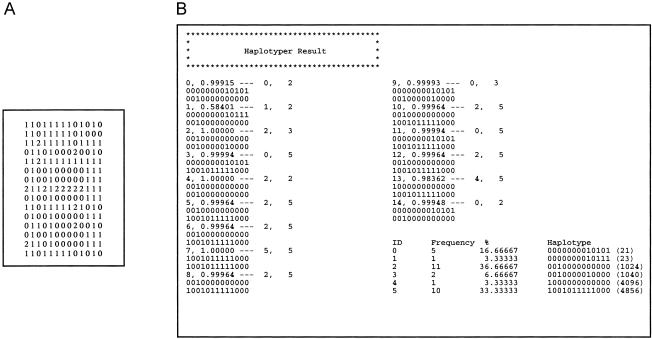Figure A1.

A, Input file format for HAPLOTYPER. Each line in the input file represents the marker data for each subject; in each line, each SNP occupies one space, and no white spaces are allowed between the neighboring loci. For each SNP, “0” denotes heterozygote, “1” denotes homozygous wild type, “2” denotes homozygous mutant, “3” denotes that both alleles were missing, “4” denotes that only the wild-type allele—“(A,*)”—was known (in the notation, “A” denotes the wild-type allele, and “*” denotes the unknown allele), and “5” denotes that only the mutant allele was known. B, Output file format for HAPLOTYPER. The output file consists of two parts: The first part lists the two predicted haplotypes with their individual identification designations and the associated posterior probabilities. The second part is the summary of the overall haplotype frequency estimated from this sample. If the number of SNPs is >20, we also included a haplotype code (shown in parentheses), which is a decimal number converted from the binary sequence of the haplotype configuration (e.g., haplotype 101 is converted to 22+20=5).
